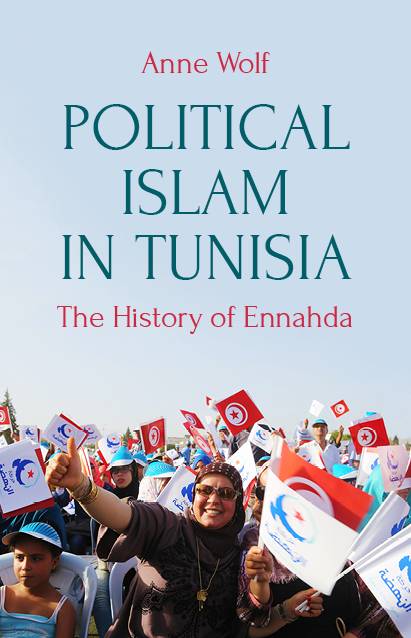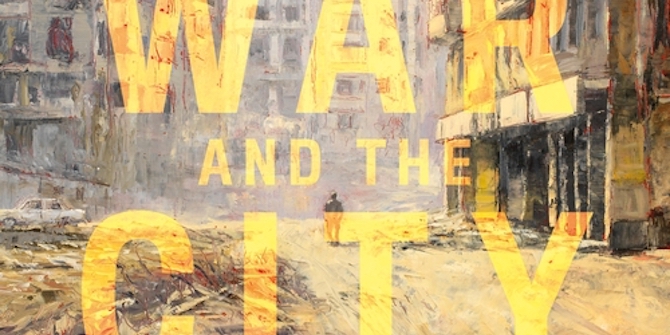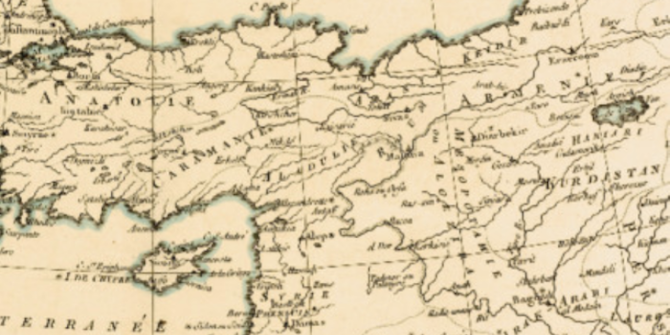by Courtney Freer

In Political Islam in Tunisia: The History of Ennahda, Anne Wolf provides a comprehensive account of the evolution of the political party in both its activities and ideology, which is essential to understanding the role of political Islam in Tunisia and comprehending its enduring role elsewhere in the Middle East. Her multidisciplinary approach allows her to trace the development of Ennahda, gleaning insights from history, Islamic studies, political science and sociology while also using hundreds of personal interviews and archival resources. Wolf’s detailed account also calls into question previously accepted notions of ingrained Tunisian secularism, of the static nature of Ennahda’s ideology and of the heralding of a post-Islamist phase after the Arab Spring.
Wolf begins by describing secular reforms implemented in Tunisia as early as the nineteenth century, which were, as she explains ‘multidimensional, and whilst for some they signified innovation and progress, for the vast majority they were closely associated with socio-economic exclusion’ (p. 17). It was at this early stage that the debate between cultural preservation and Western ‘progress’ emerged (p. 22); Wolf here therefore debunks the myth of secularism as somehow indigenous in Tunisia.
After independence in 1956 and his election in 1957, Habib Bourguiba proclaimed that the country would be ‘Western in sympathy and policy as the Tunisian monarchy that was abolished’ (p. 25). As a result, religious observance shifted to the private arena, though by no means disappeared (p. 27). Wolf identifies three primary factors that contributed to the gradual politicisation of Islam in Tunisia, which are strikingly similar to those that contributed to the politicisation of religion elsewhere in the Middle East: increased availability and influence of Muslim Brotherhood literature from the late 1960s, especially among youth; the Iranian revolution presenting a religious model of rule; and student bodies at politicised university campuses that contained both religious and far-left activists (pp. 27–28).
Because the government initially focussed its crackdown on the more active leftists, hundreds of whom were tortured and imprisoned between 1968 and 1974, Islamists managed to garner greater support (p. 39). Al-Jamaʿa al-Islamiyya, Wolf explains, emerged as Tunisia’s first organised Islamist group, recruiting members on the basis of their rejection of both Bourguiba’s modernisation and far-left activists’ proposed reforms, yet focusing primarily on personal piety ahead of political agenda (p. 36). The Islamic Tendency Movement (MTI) was established to contest university student union elections and focused on taking political action against state Islam and secularisation (p. 44). As this arm of the Islamist movement became more powerful, leaders changed al-Jamaʿa al-Islamiyya’s name, in 1979, to the MTI, reflecting the group’s desire to contribute to ongoing political debates and the power of student unions in pushing forward such debates (p. 46).
As the MTI became more politically focussed, Wolf explains, the government was less willing to accept its activities and began cracking down on the movement (p. 54). Founding members Rachid Ghannouchi and Abdelfatteh Mourou agreed that the MTI should remain active, yet that it would be more pragmatic to do so underground.
In Wolf’s estimation, repression of the MTI in the 1980s actually enabled it to garner popular support, as ‘the limits of Bourguiba’s declared political opening’ became clearer (p. 58). Despite the MTI’s efforts to mobilise its support base, its leadership still faced restrictions – Ghannouchi and Mourou could not preach at local mosques, and former detainees were banned from working in the public sector and, in some cases, from resuming their studies (p. 62). The crackdown accelerated, leading some members of the MTI to join more violent groups and even help to plan a coup (pp. 65–66).
Zine El Abidine Ben Ali (r. 1987–2011), as Wolf traces, pre-empted the Islamists’ attempt to take power and became president through a bloodless coup, promising reform and economic improvements, freeing all MTI prisoners between November 1988 and April 1989, and even allowing a member of the MTI to participate in the negotiation of the National Pact (pp. 166–67). Despite Ben Ali’s acknowledgement of the importance of Islamist support, he still limited their ability to operate as a political party, leading the MTI to change its name to Harakat Ennahda (Renaissance Movement) and to adopt a more political approach than the socio-cultural one it had previously promoted (p. 69). Ennahda’s application for party status was nonetheless rejected in 1989, on grounds that some members had been imprisoned for more than three months (p. 71). After 1989, Ennahda took on a strategy of ‘self determination’, granting greater autonomy to local branches to ‘decide for themselves the specific action on the ground’ – this led parts of the movement to espouse violence (p. 74). Thousands of activists were also arrested during this period, and the leadership went into exile.
Rachid Ghannouchi, upon his arrival to London in 1989, began leading a new Executive Bureau of Ennahda, complementing the Political Bureau founded in Paris in 1987 (p. 87). Although the leadership was based in London, Wolf explains that, because the movement’s members lived primarily in France, Germany and Switzerland, the executive leadership had little effect on everyday life and the international movement remained weak – something that much past literature fails to mention (p. 88).
As repression worsened in the 1990s, secular left-leaning activists became more willing to cooperate with Islamists to challenge the regime, leading to the Call of Tunis Agreement signed by Ennahda and the Congress for the Republic (CPR) in Aix-en-Provence in June 2003. It called for ‘democracy, the liberation of all political prisoners, and a continuation of the fight against corruption’. The statement also demanded ‘respect for the identity of people and its Arab-Muslim values and a guarantee for freedom of belief and the political neutrality of places of worship’ (p. 101). Ultimately, though, Wolf assesses that the involvement of Ennahda figures complicated efforts at cross-ideological cooperation and limited its overall impact on Tunisian political life (pp. 101–103).
Increasing religiosity was seen throughout the 2000s, due to what Wolf dubs ‘the sharp decline in their local traditions that had come with the rise in consumerism’ (pp. 109–110) – an interesting dynamic that I have identified with the rise of Islamist movements in the Gulf states. Recognising the political capital of religion, ‘public signs of religiosity deeply unsettled the authorities, which perceived them as expressions of political dissent’ (p. 113), leading to enforcement of Regulation Number 108, passed in 1981 prohibiting ‘sectarian dress’ in public.
Ennahda meanwhile focused on enhancing its public image to make an eventual comeback, and internal restructuring to expand its membership (pp. 115–116). A disconnect between leadership and membership emerged, common in Islamist movements that do not divide into party (hizb) and movement (harakat). As Wolf explains, ‘[o]n the one hand, Ennahda leaders were keen on reviving political activities, while its rank and file, on the other, were longing for a purely social project [….] Ennahda’s support base decreased somewhat once it became apparent that the party did not have an immediate recipe to tackle socio-economic malaise’ (p. 118). It was during this period of regrouping that the Arab Spring emerged.
After the fall of Ben Ali, then-Prime Minister Beji Caid Essebsi released all political prisoners and legalised all parties (p. 129). Despite the fact that they were by no means the most active in the protests, Wolf explains, Ennahda came to the fore shortly thereafter, largely due to their long history of mobilisation and institutionalisation. Winning 37 percent of the vote, Ennahda formed a troika government with secular parties, the CPR and Ettakatol. In March 2012, Ennahda declared that sharia would not be included in the constitution, a controversial stance that led some 10 per cent of its youth branch to leave the party, many of whom joined Salafi groups that are less willing to compromise Islamic values (pp. 138–140).
Wolf goes into less detail about the present era in terms of Ennahda’s internal debates and strategies, instead looking more at its ties with secular parties and Islamist groups abroad. She notes that Ennahda had strengthened ties with other Islamist groups seeking to gain power in the post-Arab Spring era, as well as with Qatar and Turkey. Nonetheless, after a coup removed Brotherhood leader Muhammad Mursi from power in Egypt, Ennahda ‘distanced the movement from them and claimed to aspire to become a ‘true’ Tunisian party, openly dissociating themselves from the international ambitions entrenched in the Muslim Brotherhood’s ideology’ (pp. 154–155). Such pragmatism has also been exhibited in the actions of other branches of the Brotherhood, ranging from the Bahraini to the Moroccan, ever more eager to dissociate themselves from the Brotherhood in the ongoing Gulf crisis.
Rachid Ghannouchi’s recent re-branding of Ennahda as ‘Muslim democrats’ was, in Wolf’s estimation, ‘mostly a response to the pitfalls associated with embracing political Islam in the age of the Islamic State, but did not represent a fundamental transformation in the movement’s ideology’ (p. 160). She then makes an interesting comparison to Christian democratic parties, which emerged as religious observance weakened in European societies, while religious practice in Tunisia is now ‘stronger than ever’ (p. 161). This dynamic calls into question the validity of arguments about post-Islamism, which underestimates the ability of Brotherhood groups to adapt to new political environments and re-emerge after decades underground. Ultimately, in Wolf’s view, Ennahda’s inability to address immediate problems, namely economic issues and religious violence, led to its fall from power, not its support for Islamist ideology (pp. 165–166).
Wolf’s (very brief) concluding chapter ties together some main themes of Ennahda’s history, yet fails to provide a major analytical contribution. At times, it feels as if the author wants to engage in debates about inclusion-moderation, the division between hizb and harakat and the role of socioeconomic status in Islamist engagement, yet seems solely to mention them in passing. This does not, however, make her historical account any less important. Ultimately, Wolf provides an important and detailed history of Ennahda, which demonstrates the degree to which, though Islamist parties throughout the Middle East face similar challenges, they react in different ways and have become increasingly focused on domestic political agendas ahead of Islamist ideology.






